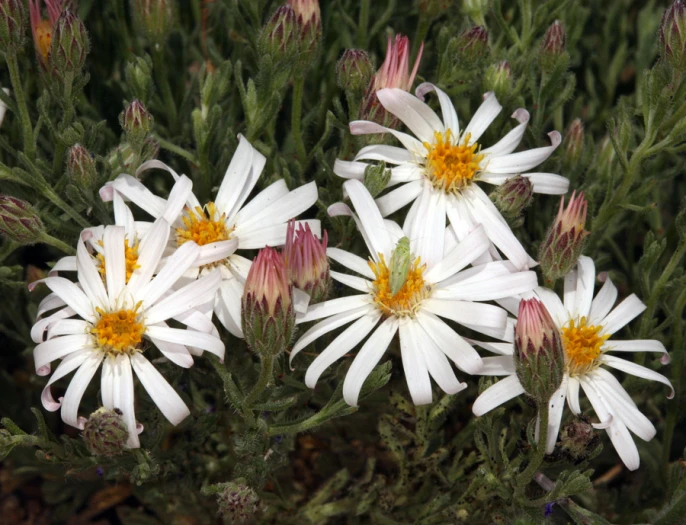Rose Heath
(Chaetopappa ericoides)
Rose Heath (Chaetopappa ericoides)
/
/

Steve Matson
CC BY 4.0
Image By:
Steve Matson
Recorded By:
Copyright:
CC BY 4.0
Copyright Notice:
Photo by: Steve Matson | License Type: CC BY 4.0 | License URL: http://creativecommons.org/licenses/by/4.0/ | Rights Holder: Steve Matson | Publisher: iNaturalist | Date Created: 2008-04-25T10:15:22-07:00 |

























Estimated Native Range
Climate Requirements
| • Precipitation | 4" - 69" |
| • High Temp. | 65°F - 107°F |
| • Low Temp. | -1°F - 57°F |
Summary
Chaetopappa ericoides, commonly known as Rose Heath or Heath-leaved Chaetopappa, is a perennial herb native to arid grasslands, rocky slopes, and open areas within the southwestern and western Great Plains regions of the United States, as well as northern Mexico. It is a low-growing plant, typically reaching only 2-6 inches in height, with hairy, glandular stems and narrow, heath-like green leaves. The small but showy flower heads measure up to 1 inch wide, featuring white or pinkish ray florets encircling yellow disc florets, blooming from late spring to early summer.
Rose Heath is valued for its drought tolerance and ability to thrive in poor, well-drained soils, making it an excellent choice for rock gardens, xeriscaping, and as a ground cover in arid landscapes. It requires minimal maintenance once established and can provide a delicate texture and subtle color contrast in garden settings. While it is not widely known for its medicinal uses, the Zuni people have traditionally used an infusion of the plant to treat pain from colds, swellings, and rheumatism. Rose Heath prefers full sun and is adapted to survive with low water once established, but it can be susceptible to root rot if overwatered or planted in poorly drained soils.CC BY-SA 4.0
Rose Heath is valued for its drought tolerance and ability to thrive in poor, well-drained soils, making it an excellent choice for rock gardens, xeriscaping, and as a ground cover in arid landscapes. It requires minimal maintenance once established and can provide a delicate texture and subtle color contrast in garden settings. While it is not widely known for its medicinal uses, the Zuni people have traditionally used an infusion of the plant to treat pain from colds, swellings, and rheumatism. Rose Heath prefers full sun and is adapted to survive with low water once established, but it can be susceptible to root rot if overwatered or planted in poorly drained soils.CC BY-SA 4.0
Plant Description
- Plant Type: Shrub, Herb
- Height: 0.5-1 feet
- Width: 0.5-1 feet
- Growth Rate: Slow, Moderate
- Flower Color: White
- Flowering Season: Spring, Summer, Fall
- Leaf Retention: Evergreen
Growth Requirements
- Sun: Full Sun, Part Shade
- Water: Low, Medium
- Drainage: Fast, Medium
Common Uses
Drought Tolerant, Groundcover, Low Maintenance, Rock Garden, Showy Flowers
Natural Habitat
Arid grasslands, rocky slopes, and open areas within the southwestern and western Great Plains regions of the United States, and northern Mexico
Other Names
Common Names: Heath Aster, Smallflower Aster
Scientific Names: Chaetopappa ericoides, Aster arenosus, Aster ericaefolius, Aster ericifolius, Aster ericifolius var. ericifolius, Aster hirtifolius, Aster leucelene, Chrysopsis ericoides, Chrysopsis ericoides
GBIF Accepted Name: Chaetopappa ericoides